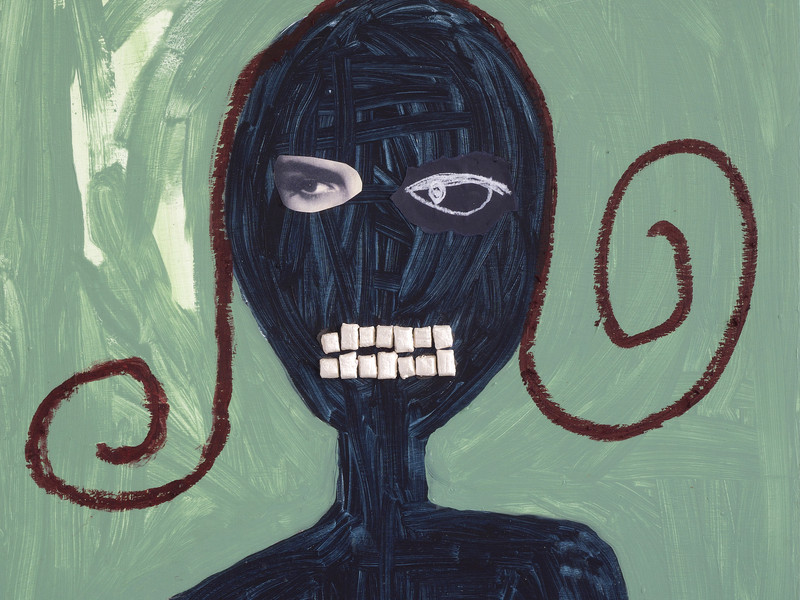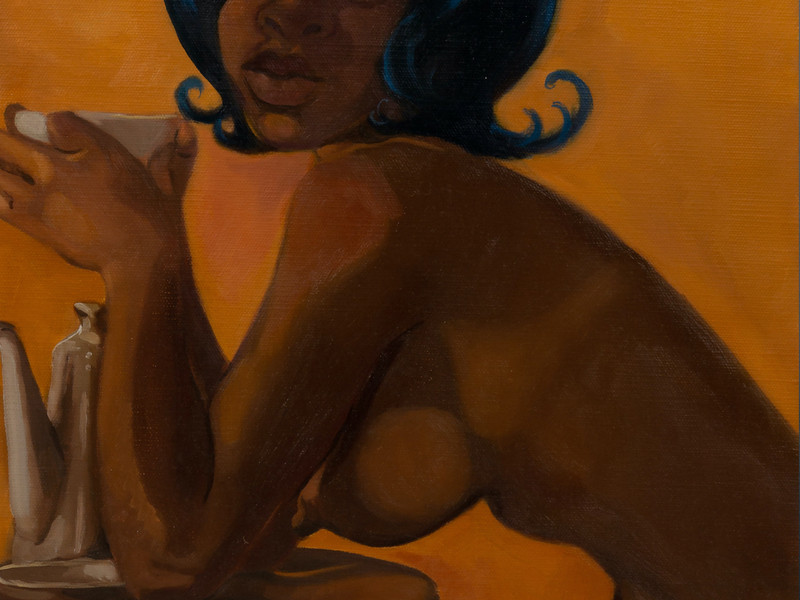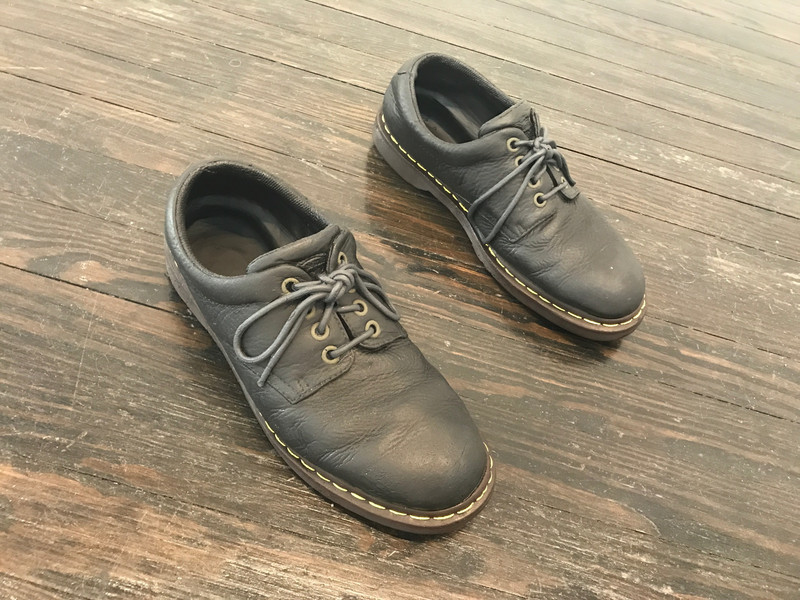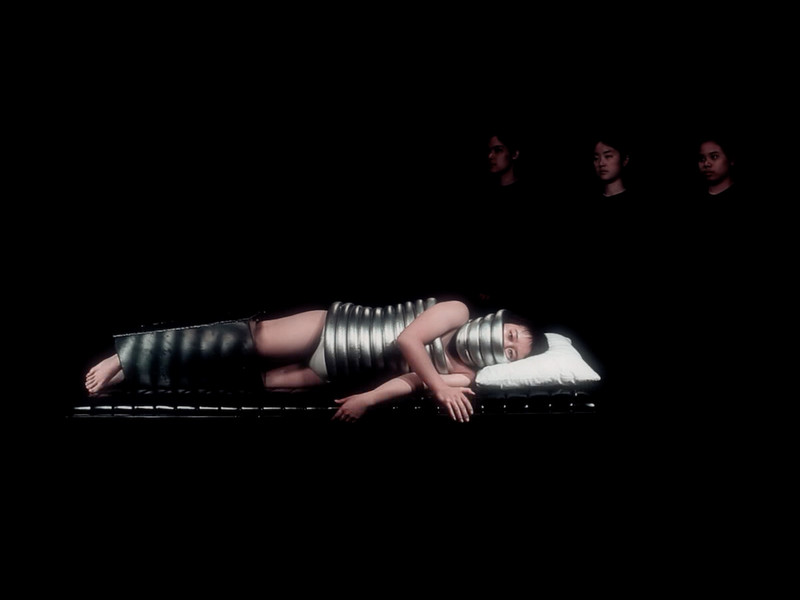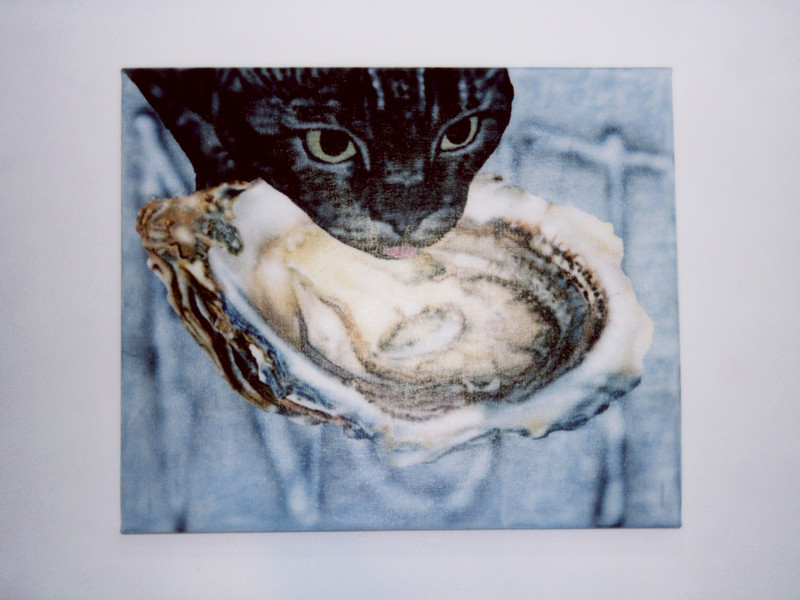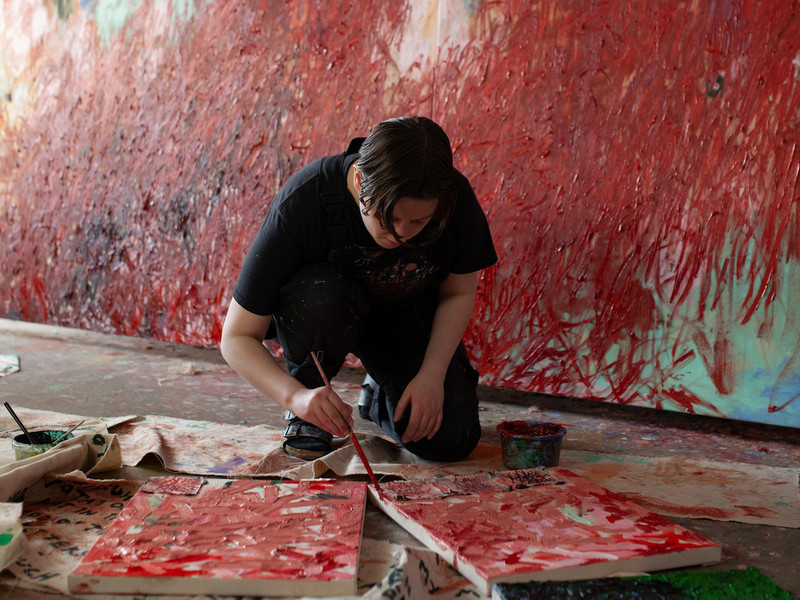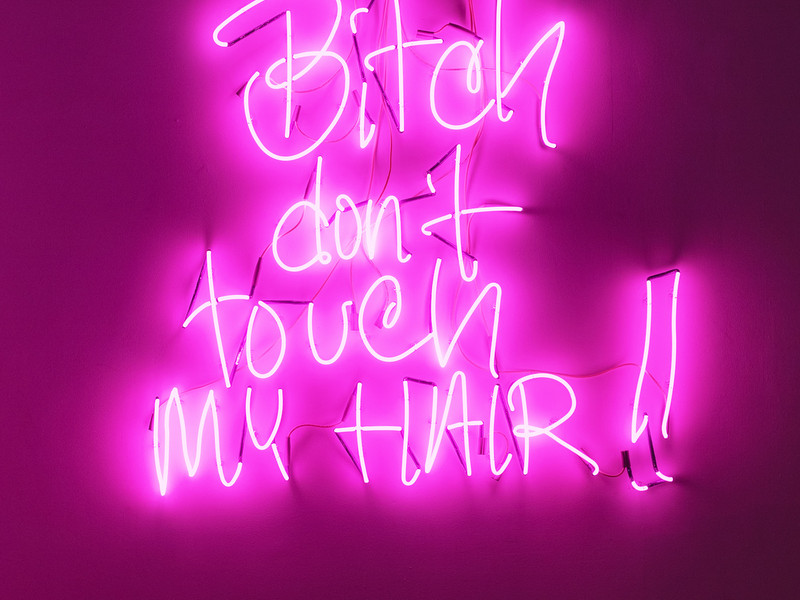Jessica Taylor Bellamy: Endnotes for Sunshine
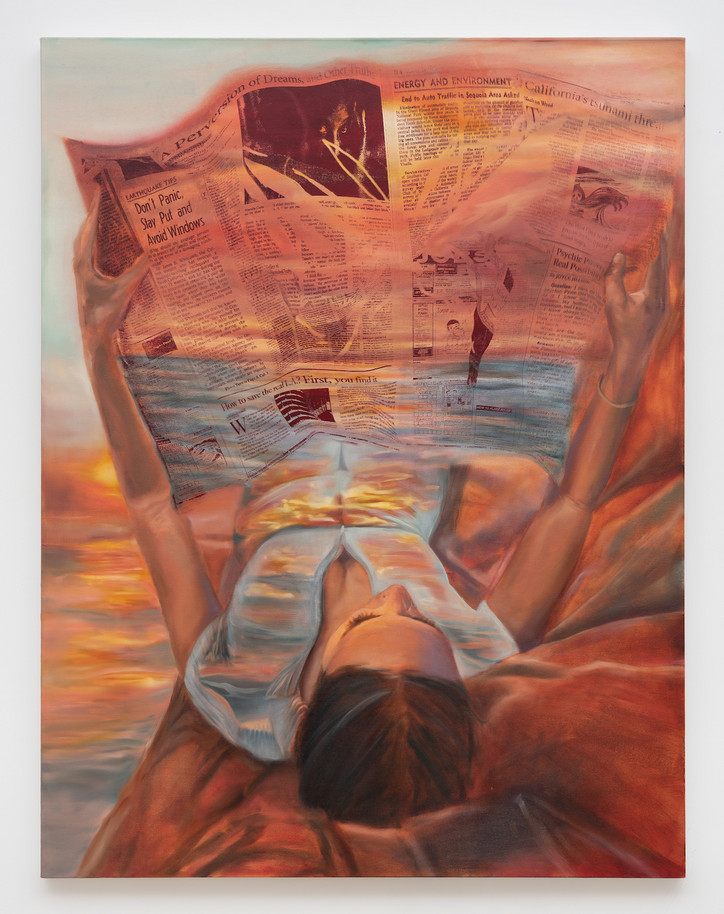
For her paintings, Bellamy pulls from her personal archive of collected data including newsprints from the L.A times, photographs she's taken, and oral histories of her Afro-Cuban immigrant family's experience of environmental change. She cuts, scrunches, and rearranges news stories about a seemingly endless stream of environmental catastrophes into large-scale silkscreens that are then superimposed over idyllic scenes of the quintessential California landscape. This labor-intensive process results in dream-like narratives or windows that give form and visibility to unseen or alternative possibilities.
office had the chance to catch up with Jessica to talk about L.A., artistic influences and her first solo show on view through February 25th at the Anat Ebgi in Los Angeles – a gallery she's adored since her time in grad school.
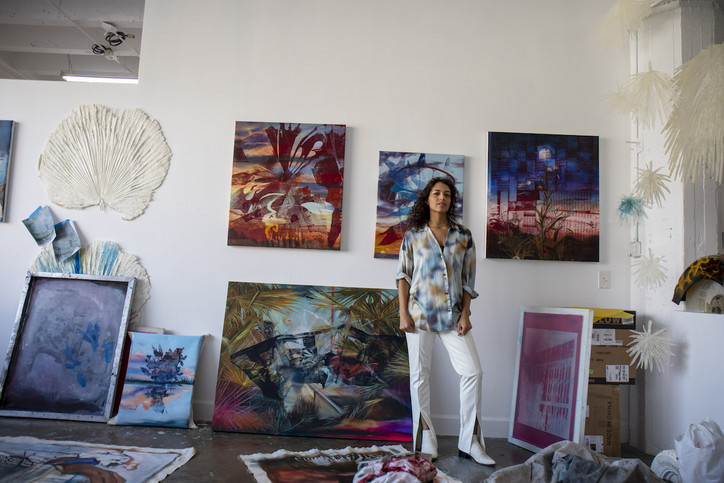
Were you an artistic child?
Super artistic. I have a photo of myself doing abstract finger painting with a very serious face that my mom sent me when I decided to return to art school. I was always the one people came to for anything creative whether that was making a homecoming float or redesigning a room.
Does growing up in California still have a strong influence on your work?
To me, the landscapes are a bit more isolated. They could be any place really, but the use of light and colors used speak to the nature of Southern California. Growing up here means so many things, but for this particular body of work I focused on capturing the spirit of L.A. by layering fantasy and reality. Not just the glamour of Hollywood but the essence of ordinary, everyday scenes and routine.
Do you see yourself as a kind of activist, or leave that up to the interpretation of the viewer?
I’d say that I’m observing and cataloging what I see of the world in my own specific way. My work isn’t about impact control or pushing people to be biodegradable. It’s seeing L.A. in the way that I do, someone that grew up here, that loves it here, that thinks about climate change.
You primarily work with oil painting, but also incorporate screen printing, video, and sculpture into your artistic practice. How does it all come together?
I’m interested in what my hand can do with classic oil painting techniques, but love what happens to those works when I incorporate silk printing and other methods. How I treat the silk screen influences how the imprints look when they get to the canvas, but I have little control over the finished product. Layering paint with the element of chance does something visually and conceptually interesting. It creates a layer for presenting information and also feeling. What does this beautiful sunset make you feel? How does that change when it’s interrupted by a story you can’t read that also doesn’t seem like good news?
Do you come up often in your art, or is it vacant of the self?
I think I’m there in terms of my perspective. One of my pieces, which incorporates painting, video and sculpture, is inspired by all the construction sites in LA. I feel like there’s a difference between walking in a city and driving through it. I try to capture what it’s like to walk in a city, a major place on a map, especially those small daily changes that often go unnoticed.
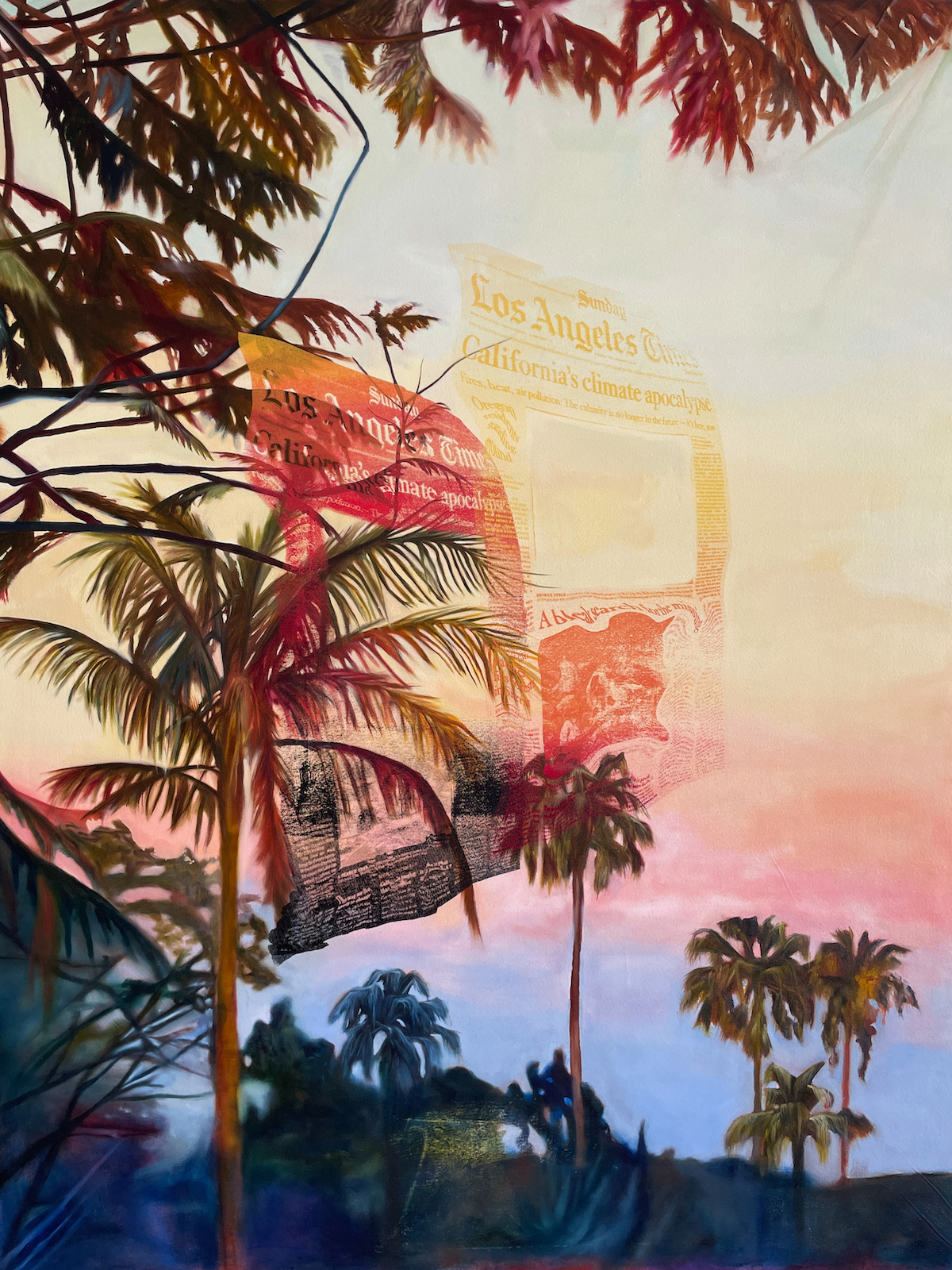
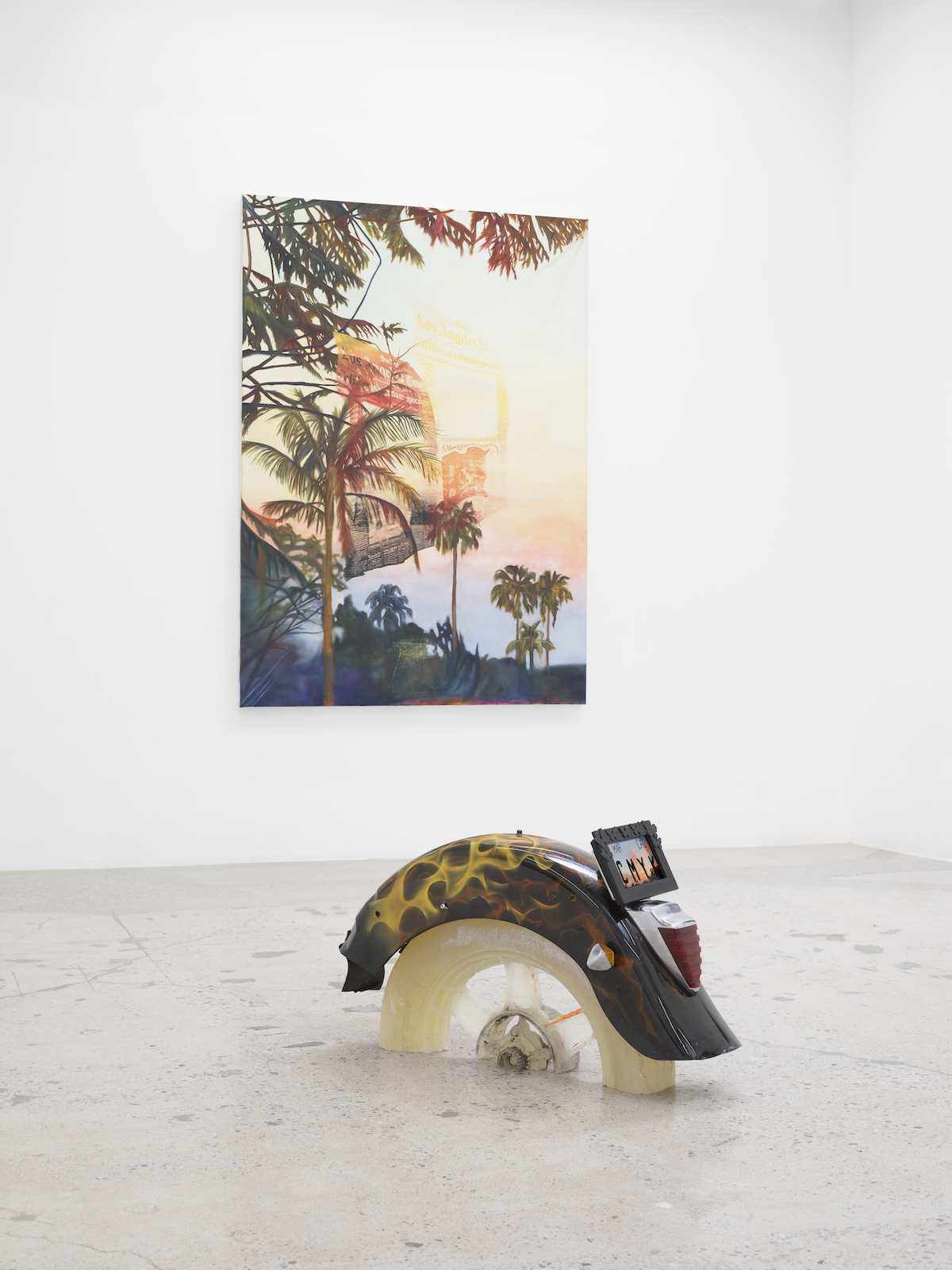
Are you an optimistic person?
I feel like I’m an optimistic nihilist. I know it’ll all end at some point, but I try to enjoy and imbue meaning into life in whichever way I can. Realist is probably a better word. I’ve always been hyper aware of living and what that means from my cultural background and personality wise.
Do you hope your work lives on past you?
I hope to be in that continuum of people who are known as great American artists connected to LA specifically because I grew up here. It’s a huge part of my identity and I hope my art connects with all kinds of people.
How do you address the climate crisis in your work?
Some pieces are more obvious, but with the others, the element becomes more integrated where it exists but may not make you immediately think of the crisis – but it's there. It sits on the contour of your awareness, especially when in a place you really enjoy. I also have a natural interest in current events – I once worked for public radio. It’s very much in my nature to be interested in these happenings that eventually find their way into the paintings.
Who is your ideal viewer?
The more I speak with people, the more I realize I don’t actually know who is the most excited to see and talk about my work. My ideal viewer probably loves painting and is okay with the interruptions I make. Someone into materiality and storytelling who feels a little nostalgic no matter what generation. I think that’s a very LA thing, just connecting over something seemingly unrelated.
What about the methodical aspect of your work?
I love everything that’s tedious… painting the canvas in whites, browns, and grays before finding the right color… going through hundreds of newspapers and researching archives... all of it is great. I could’ve honestly made twelve pieces out of one of the collages I put together and who knows? Maybe I'll do that in the future.
